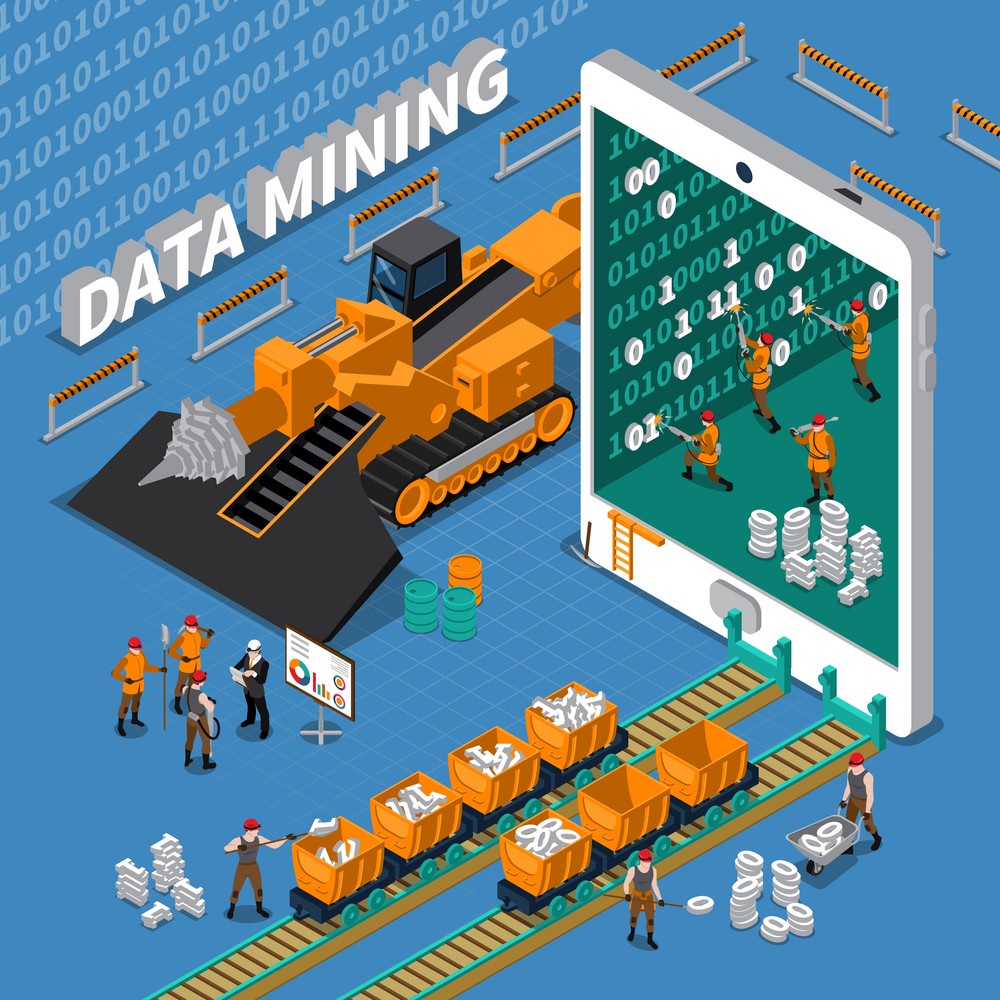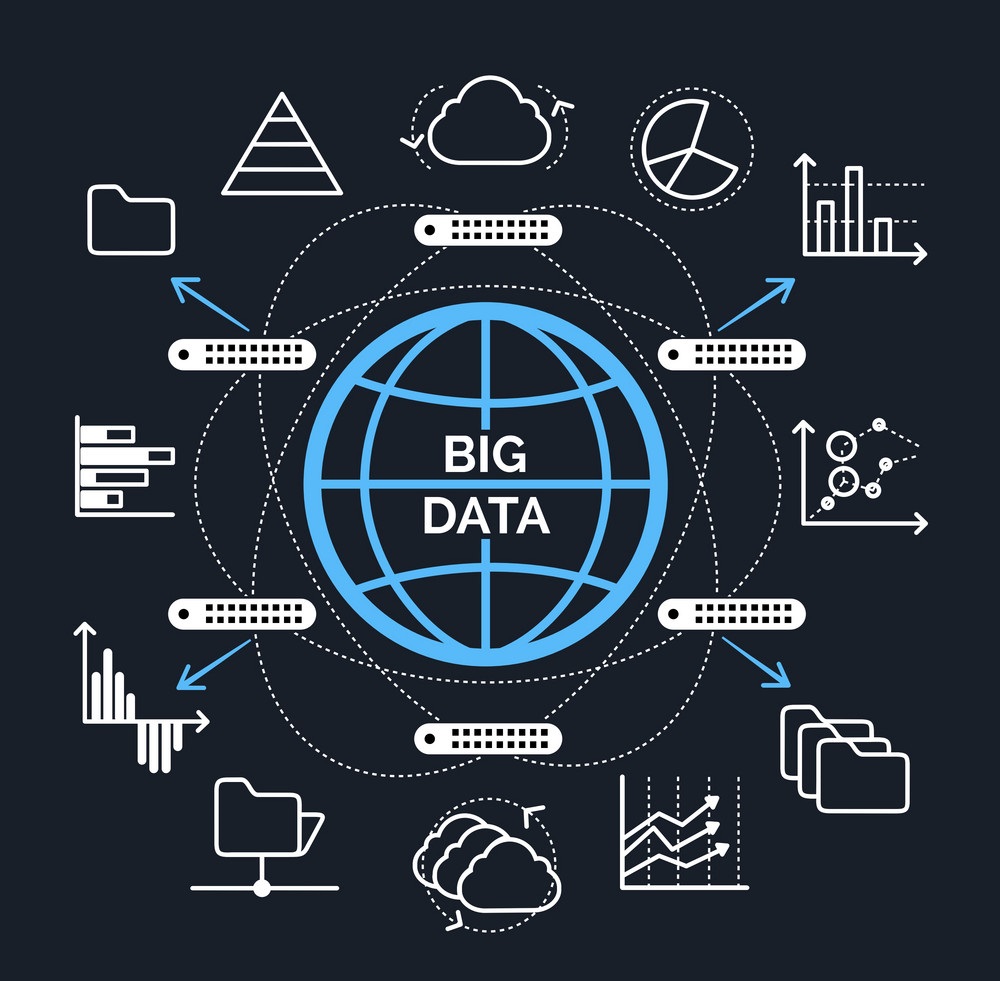Difference Between Data Mining and Big Data
Certain technological terms are constantly repeated in business circles. Terms like “Big Data”, “Data Mining” have become the keywords for data-driven businesses. But do you know what they mean? Above all, are you using these terms correctly?
These terms are related to each other, but they are not exactly the same. Both facilitate data analysis and offer a large amount of valuable information. This blog will help you know the difference between big data and data mining, and explore their basic concepts.
Content
Data Mining vs Big Data
Data Mining |
Big Data |
|
| Definition | Refers to the process of extracting usable data from a larger set of raw data. | Refers to a huge volume of data containing a larger variety and arriving at high velocity. |
| Focus | Automatic discovery of patterns for actionable insights, and predictions from large datasets and databases. | The high volume of data, collected from a variety of sources, at high velocity, with high veracity, and contains a big business value. |
| Purpose
|
Extract valuable insights from huge data | Create a scalable method for real-time insights from a huge amount of exponential data that cannot be handled by traditional data processing software |
| Types of data | Flat Files, Data Warehouses, Transactional Databases, Relational database, Multimedia Databases, Time Series Databases, Relational | Structured data: Schema and tabular data, CSV, XLS files Unstructured data: video, audio, image files, surveillance data, geospatial data, audio, weather data, invoices, records, emails Semistructured data: XML and other markup languages, mails, TCP/IP packets, zipped files, and web pages. |
| Requirement/ Tools | Python, R, Weka, Knime, Rapid Miner, Orange | Apache Hadoop, Casandra, Pig, Hive, Kafka, MongoDB, CouchDB, Tableau |
Now, let’s move on to the concepts.
Best-suited Data Analytics courses for you
Learn Data Analytics with these high-rated online courses
What is Data Mining?
It is the practice of searching huge volumes of data sets and discovering patterns and trends that can not be done by simple analysis. Data miners use algorithms to classify the data and predict the outcomes. The process of data mining is also referred to as Knowledge Discovery in Data (KDD).
To summarize, it focuses on –
- Pattern discovery
- Prediction of probable outcomes
- Generation of actionable information
Data mining is named after an analogy – mining. As you know, it is a process of extracting something valuable, such as diamonds or coal, from deep mines, here data.
It is a broad concept that combines the concepts of statistics, machine learning, artificial intelligence, and database systems. It allows large databases to be explored. Data mining explains data behavior in a specific context and turns data into actionable knowledge.
Various stages of data mining include –
- Data collection — Data collection is the first step. It is crucial to ensure the reliability of data. More information you have, the more reliable the analysis is.
- Data cleaning — With huge amounts of data in hand, you would need to ensure that you only keep the necessary data and remove any unwanted data.
- Data analysis — Mining algorithms find patterns in data.
- Interpretation — The data is ready to draw conclusions.
Applications of Data Mining
One example of smart usage of data mining is that of Walmart. The retail giant discovered that people were more likely to buy Strawberry Pop-Tarts in the US hurricane was announced. This could be the result of impulsive buying, and Walmart made the best use of it. It decided to put Strawberry Pop-Tarts near the checkouts and saw a remarkable hike in their sale, thanks to consumer behavior mining.
Other applications of data mining are –
- Understand customer preferences
- Customer acquisition and retention
- Improve cross-selling
- Increase the ROI of digital marketing campaigns
- Fraud detection
- Credit risk identification
- Monitor operational performance
What is Big Data?
Big Data refers to the collection of a large volume of data that moves too fast and is beyond the limits of traditional database architectures. This data can be structured, semi-structured, and unstructured.
The main characteristics of Big Data could be summarized as:
VOLUME: Refers to the humongous amount of data that is generated and stored
VARIETY: Refers to the different ways the data can be used
VISIBILITY: Describes the nature and type of data
VELOCITY: Rate at which the data is received
VERACITY: Refers to the degree of reliability based on the quality of the data
VALUE: The information generated must be useful
The importance of big data lies not in how much data we have, but in what we can get from that data. Big data analysis allows you to extract hidden patterns within the data points to gather scalable insights.
Applications of Big Data
Before we move forward, let’s see some interesting examples of the use of big data by multi-billion corporations and how big data improved their revenues.
Starbucks
Starbucks uses big data and customer metrics to offer customers more targeted and personalized service options. Members of the Starbucks rewards program can call in future orders and benefit from exclusive rewards. This is a win-win for both customers and the company. Here the customers can receive rewards and the company receives more customer information and understands their spending habits and product preferences.
Netflix
Another interesting example is Netflix. It launched the “Netflix prize” of $1 billion. The prize was for anyone who could create the best algorithm to predict user ratings based on previous ratings or scores of a series or movie. Netflix awarded $1 billion to BellKor’s Pragmatic Chaos team, which outperformed Netflix’s own algorithm for predicting ratings by 10.06%.
Today, 80% of the content played on Netflix comes from recommender systems.
Netflix uses traditional business intelligence tools like Tableau, Teradata, and MicroStrategy in combination with big data tools such as Hadoop, Hive, etc. It has over 140 million subscribers and now it has been able to create algorithms that can predetermine the content that users are most likely to see.
Some interesting applications of big data include –
- Offer personalized healthcare services to patients
- Analyze viewer patterns on OTT platforms
- Traffic management
- Predictive manufacturing and maintenance
- Crime prediction and prevention
- Fake news detection
Conclusion
Data Mining is a key exploratory technology in Big Data projects. It solves specific data-based questions and helps to extract information, along with finding trends and anomalies in the dataset.
The purpose of big data and data mining is to develop interpretable insights and usable information. Big data helps data miners to develop improved models. Both technologies ascertain valued insights to improve the decision-making process for businesses.
Top Trending Articles:
Data Analyst Interview Questions | Data Science Interview Questions | Machine Learning Applications | Big Data vs Machine Learning | Data Scientist vs Data Analyst | How to Become a Data Analyst | Data Science vs. Big Data vs. Data Analytics | What is Data Science | What is a Data Scientist | What is Data Analyst






Rashmi Karan is a writer and editor with more than 15 years of exp., focusing on educational content.
Education: M.Sc. Biotechnology
Experience: 15+ years creating informative and educational content
Spe